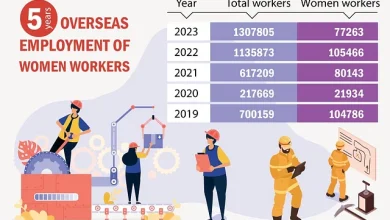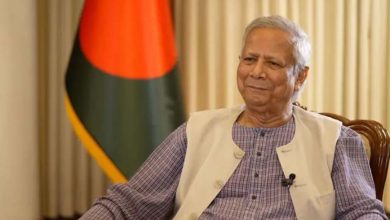Why RMG owners reluctant to build at Mirsarai economic zone

Though the country’s largest industrial zone at Mirsarai in Chattogram is gearing up to facilitate industries to go into production and some factories have already started manufacturing, those who took plots for apparel units find the zone is far from ready and chose to stay away.
To date, only 41 garment factories have taken a lease of 239 acres in the 500-acre garment village inside the Bangabandhu Sheikh Mujib Shilpa Nagar after a deal signed in 2018 between the Bangladesh Economic Zone Authority (Beza) and the Bangladesh Garments Manufacturers and Exporters Association (BGMEA).
But none of them has so far shown interest in setting up their units there. Some of them have even backed out from their initial plan and cancelled the lease, citing poor progress in building necessary infrastructures like access roads and ensuring essential utilities for investment.
Beza also signed a similar agreement with the Bangladesh Knitwear Manufacturers and Exporters Association (BKMEA) four years ago but with no result to date.
Shahidullah Azim, vice president of BGMEA, “So far, no facilities have been provided for us. The land is still about six feet below road level. There is no gas or electricity. There is also no arrangement for workers to live in and their commuting to and from work.
Syed Nazrul Islam, senior vice president of BGMEA and one of the 41 entrepreneurs in the economic zone, told TBS, “The global situation, including Covid-19 and the war in Ukraine, has created uncertainty. We have to think about the future, but we lack confidence. As a result, many are reconsidering whether to establish factories or invest there.”
Mohammed Hatem, executive president of the BKMEA, “We have about 800 active members. After signing the memorandum of understanding with Beza, we have not received much response from entrepreneurs. We have received only 10 applications so far.”
He explained the reason for this, saying, “The infrastructure development work there is very slow. The township has not yet been built, and there are questions about whether or not workers will be available.”
In such a situation, industry insiders believe that the decline in clothing exports due to the global economic slowdown following the Russia-Ukraine war and the renewed political and labour unrest could further delay the setting up of garment factories in the economic zone.
However, Beza, which is responsible for developing the zone, says that the garment village portion has been developed as per the master plan to the point where owners can start to build. Supply of gas, electricity and water has been arranged to meet initial needs of all factories going into operation and the work is going on to secure future supplies.
Abdullah Al Mahmud Faruk, Project Director at the Bangladesh Economic Zones Development Project under Beza, said, “Five industries of sectors other than apparel have already started production here. Another 22 industries are working. If the zone was not ready, how did they build infrastructure and start production?”
In response to the BGMEA’s allegations, Abdullah Al Mahmud Faruk told TBS, “We have plans to provide planned accommodation for workers outside the economic zones.”
Opposing arguments
Apparel industry owners have listed the shortcomings that are holding them back.
“In the meantime, the prices of construction materials have skyrocketed. Many [garment factory owners] have taken their [leased] money back,” BGMEA vice president Shahidullah Azim said.
An entrepreneur, who is not connected with the BGMEA and leased 50 acres of land there, cited higher electricity bills and lack of ‘place for people to stay’ among reasons for him to not go for investing. “There was no [condition to pay] VAT when the land was leased. Now [the authorities say] VAT has to be paid,” he went on saying.
However, the Beza authorities do not agree with the entrepreneurs’ allegations. Instead, they are saying that if the entrepreneurs do not build industries after taking a lease, then they should not hold on to the plots. They should rather cancel the lease to make way for others interested, they suggested.
Beza Executive Chairman Shaikh Yusuf Harun told, “They (garment industry owners) have got the land allotment in the best locations. If they want, they can set up buildings on their plots next to the road immediately.”
The Beza project director feels that the apparel entrepreneurs who took lease of land might lack enthusiasm. “That’s why they are arguing with different excuses. If they were interested, they would have come to us to discuss any problem,” Abdullah Al Mahmud Faruk said.
Asked if apparel entrepreneurs were cancelling, he said, “Two or three owners have exchanged land among themselves. We did not have to give them the money back.”
He, however, said he was optimistic that they would be interested if the economic zone was fully operational in the next two or three years.
The Beza executive chief explains they have a master plan for how much soil to be filled in and have built a road accordingly on the side of the land allotted to apparel owners. “Now some of them (garment industry owners) tell us that we have to raise the soil to the level of the road. That is not doable,” Shaikh Yusuf Harun told TBS.

For the past two decades, the idea of a separate zone for the garment industry has been discussed repeatedly. Even after acquiring land at Baushia under Gazaria upazila of Munshiganj in 2015 to create a garment village, readymade garment (RMG) industry owners have not been able to work on it.
The latest initiative to relocate randomly set-up garment units in different districts to a well-planned industrial zone also does not seem to be working.
The garment village is expected to see an investment of $2 billion and create five lakh jobs.
Initially, apparel owners seemed upbeat at the initiative, hoping to get a world standard industrial zone equipped with all necessary logistics and a centralised effluent treatment plant.
The BGMEA earlier paid Tk209 crore to Beza as the lease money for its members and was waiting to see the plots ready for physical development.
Exactly two years back, a TBS report had quoted Beza executive chief as saying the entrepreneurs were told to start physical construction on their plots located in the zone 2B besides the 120-foot road.
But that has not happened yet as RMG entrepreneurs do not find the plots right.
Experience of the availability of workers in factories that have gone into production
Entrepreneurs of factories that have started production in Bangabandhu Sheikh Mujib Shilpa Nagar told that a portion of the workforce currently lives in Mirsarai town or nearby areas, which is about 16 kilometres from the zone. These workers are transported by their own arrangements.
Shafal Barua, general manager of Modern Syntex Limited, a factory with 450 workers in that EZ, “Most of our workers live near Mirsarai town. They are picked up and dropped off in our own transportation system at our own expense.”
He said that workers are also brought and taken in this way in other EPZs, and it provides some benefits for workers because they do not have to pay for transportation.
McDonald Steel Building Products Ltd officials said that they transport 200 of their workforce by their own vehicles. They have built a dormitory near the factory in the zone to house the remaining 200 workers.
Differences over CETP
It has been learned that even though the Beza authorities want to establish a central effluent treatment plant (CETP) for all industrial enterprises in Bangabandhu Sheikh Mujib Shilpa Nagar according to global standards, the garment industry does not want to be a part of it.
According to an official, garment and textile industry owners want to establish ETPs in their way.
Shaikh Yusuf Harun said, “We have no problem if they set up their ETPs. But they must participate in our CETP because in the future, when the products made here are exported, the question will arise abroad whether it is green resilience or not. We have told them to participate in our CETP.”
Stating that they are worried about the CETP bill, he said, “If they discharge zero waste from the factory, they will not have to pay any bill.”
Beza says no worry about utilities
Some investors are concerned about the utility services at Bangabandhu Sheikh Mujib Shilpa Nagar. Asked what steps have been taken in this regard, Beza Executive Chairman Shaikh Yusuf Harun told TBS, “Utilities refer to gas, electricity, water, and telephone services. In the case of gas, we have built a 200 MMCFD gas city gate to meet the initial demand. Gas connections can be taken from there.”
He went on to say, “And to meet the water demand until 2028, we have brought some surface water and some excess water from the Matamuhuri Irrigation Project. In total, we will get 140 MLD (million litres per day) of water. This will allow us to meet demand until 2028.
“In this industrial zone, when all investors start production, we will need about 1,000 MLD of water. The local government department is working on it. It has already prepared the DPP. It will be through a public-private partnership. When the supply of 1,000 MLD of water is ensured, there will be no water problem.”
He added, “We are getting the current electricity demand. We will get more electricity from the grid line. The government is also working to provide about 3,500 megawatts for future demand and to supply uninterrupted electricity to us. Telephone and internet facilities are available everywhere. So there is no need for investors to be concerned about utility services.”






